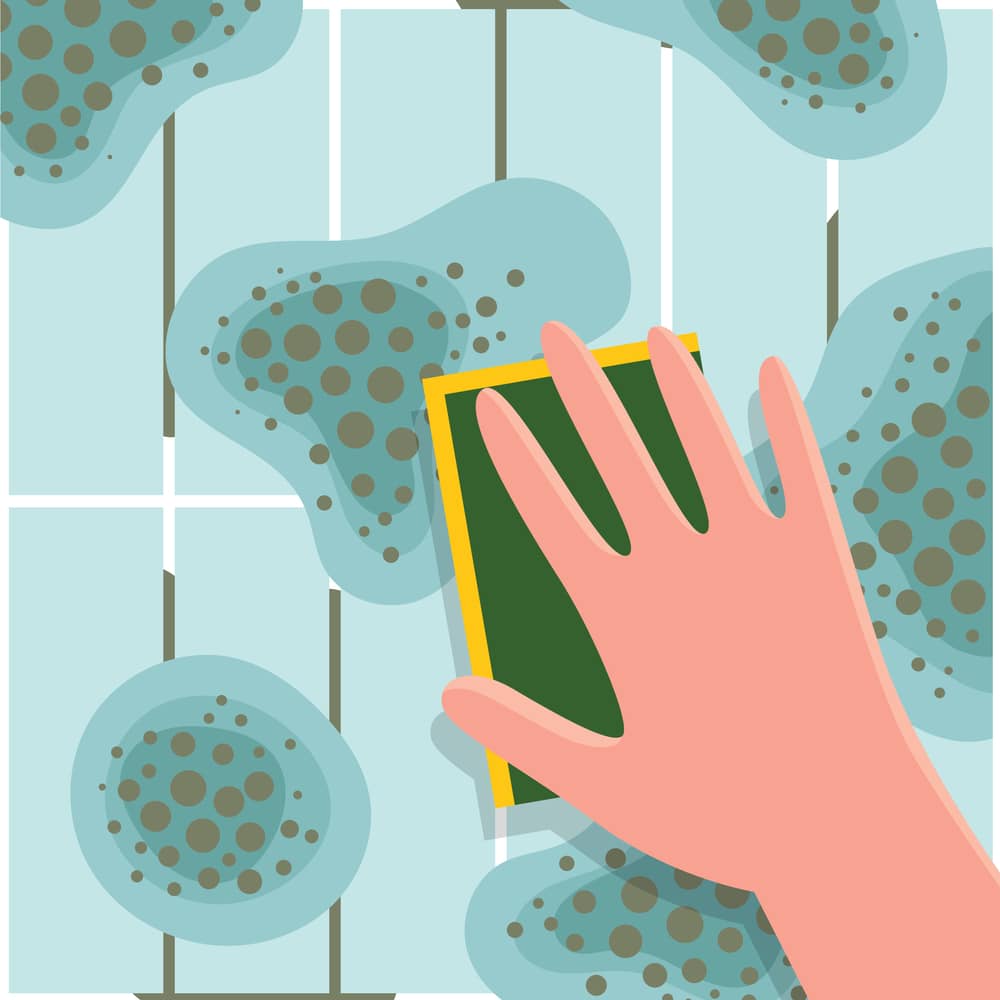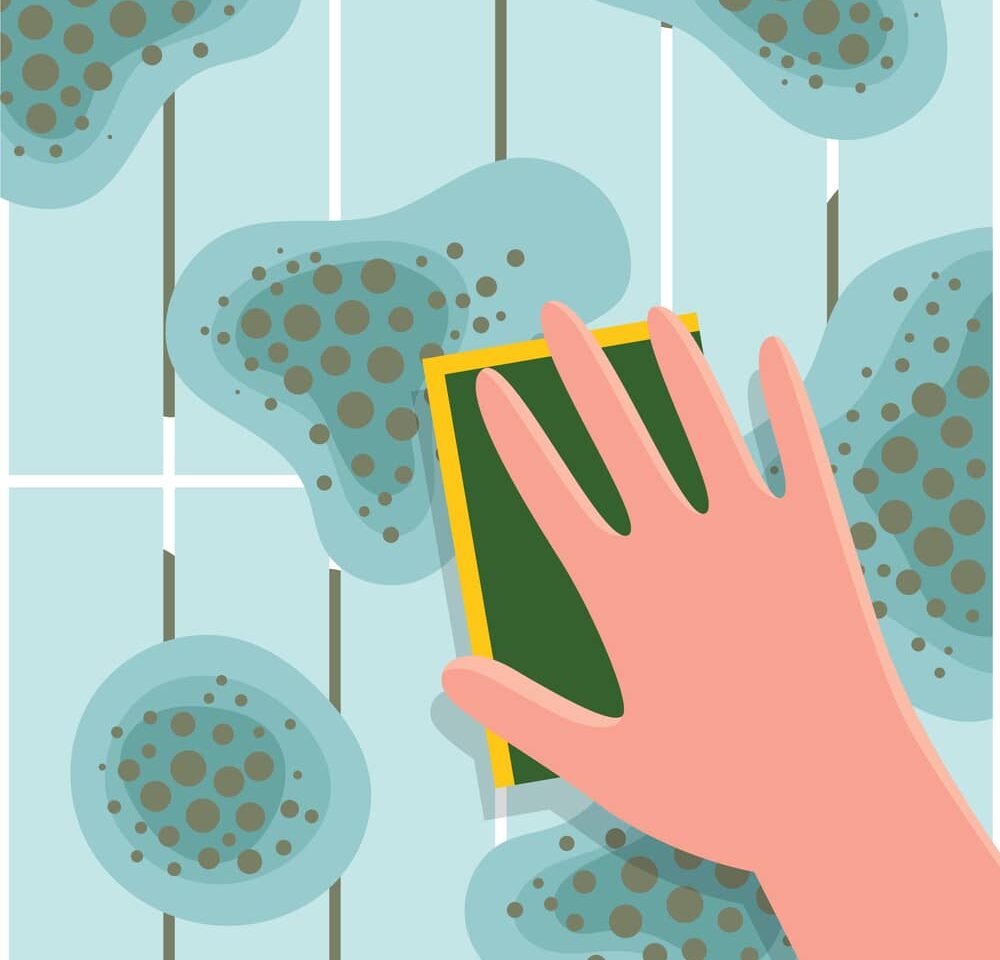10 Ways To Get Rid of Mold Naturally

Anywhere moisture is present, mold may not be far behind. Whether in a damp climate or a poorly ventilated home, mold can cause concern. Not only can mold be unhealthy and unsightly to you and your family, but it can stay in the air, so you have to treat it properly.
The Underlying Cause of Mold
Mold only requires two things to grow and spread, food and a damp environment. Unfortunately, mold is all around us in the air every day, so if the conditions are favorable, then the mold is likely to happen. The only natural way to keep mold at bay is to fix the underlying cause of the damp environment.
Common water issues for mold growth:
- Construction issues – poor airflow
- Human error – splashing water or not correctly drying shower and sink areas
- Maintenance issue – leaking pipes or poor window seals
Once you have found the cause of the water and mold, you can change the habit or get a professional to help resolve the issue.
How to Get Rid of Mold on Fabric
If you have placed fabric or upholstery in a damp environment, you may find mold on it. The best way to kill the mold from your fabric is to take it outside if it isn’t already out there. You can use a diluted bleach solution or fabric stain remover to spray on your fabrics and pre-treat the mold. Then you can use hot water to wash your fabric and allow it to dry completely if the mold is completely gone.
How to Remove Mold in the Basement
Mold is most commonly found in basements because they aren’t used as often as the main parts of your home. It is a good idea to regularly check on seals and pipes and fix any leaks you find within your basement. If you find water or dampness regularly in your basement, you may want to consider running a dehumidifier or fan to maintain air circulation and reduce dampness.
How to Kill Mold in the Attic
You may get mold in your attic from a roof leak, poor window seal, or poor ventilation, allowing condensation to accumulate. To kill mold in your attic, you will need to fix the issue causing the mold, remove the contaminated items, and treat the attic. You will need to clean the attic of the mold from the floor, walls, and exposed timbers. Once all mold is removed, you can run a dehumidifier or fan to dry the treatment.
How to Get Rid of Mold Within the Walls
Unfortunately, getting mold inside your walls can be challenging to discover and clear out properly. Some warning signs for mold within your walls are an earthy or musty smell, allergies that clear up when you are away from your residence, or stains on your walls. If you find mold or signs within your walls, you must call a professional cleaner to ensure they are appropriately treated.
Removing Mold from the Ceiling
Killing mold on the ceiling is similar to treating it on the walls. Mold occurs on the ceilings in poorly ventilated and humid rooms, such as bathrooms or laundry. To help prevent mold on the ceiling from forming, make sure you use a vent or fan or open a window regularly.
How to Kill Mold in the Bathroom
Due to the lack of air circulation and the level of water in a bathroom, it is not uncommon to find mold buildup in bathroom areas. To prevent mold buildup, you must wipe down all standing water and condensation and vent the bathroom well.
Common areas to check frequently for mold:
- Around the sink
- Around the tub
- Shower corners
- Shower door tracks
- Tile grout
How to Treat Mold in the Air
Mold is all around us, traveling in the air until they find a place where it can grow. To help reduce your risk of mold, you can treat the mold spores within the air. This is especially helpful in areas where mold is found naturally in the ground, such as a swamp, farmland, or wooded area. To help reduce your risk of mold growing within your property, you can use an air scrubber, UV light treatment, or fogger designed for mold spores.
Air Scrubber for Mold Treatment
Air scrubbers are part of the HVAC system within your home and are a specialized filter to help remove harmful particles. Some air scrubbing systems contain purifying filters that kill pathogens, bacteria, and mold.
When an air scrubber is installed correctly, it can remove up to 99 percent of all contaminants within the air. This can help to remove mold and other contaminants from your air, so you know your home is cleaner. However, when you open the door or window, you will have air enter your home that hasn’t been cleaned and scrubbed, so make sure you are still checking around for mold frequently.
UV Light to Kill Mold
Another option to remove mold and other contaminants in your air is installing a UV light attached to your HVAC system. UV light can kill many bacteria and pathogens, including mold spores. A UV light system is cheaper and less intrusive to your HVAC system than an air scrubber. The UV light does not hinder your HVAC system, but an air scrubber can require your system to work harder, pushing the air through the tiny filter.
Bomb Foggers for Mold
Some foggers provide a fungicidal solution. These foggers release a fine mist that can get into all nooks and crannies where mold can live and grow. Some of these are available to use in vehicles and other spaces needing mold removal. Please ensure you provide air to the space after using a fogger and obey the instructions to ensure you don’t inhale any harmful chemicals.
Conclusion
If you find yourself with mold, you must treat it immediately to prevent a more significant issue. However, the best way to kill mold is to prevent it from happening. If you maintain your home by actively searching for areas where water is present, fixing broken seals, and leaving windows and doors open for proper ventilation, you can help prevent mold from growing.

